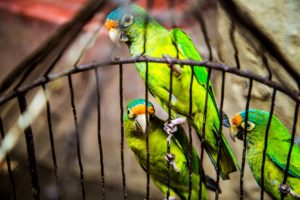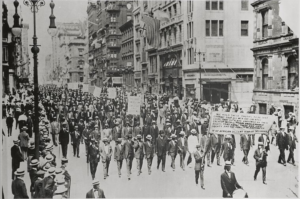Jazz and Literary Improvisation

Benjamin Suter /Pexels
According to lore, jazz was an amalgamation. In 1894, New Orleans Creoles lost their separate status from African Americans, so Jelly Roll Morton and Sidney Bechet started mixing it up with Buddy Bolden, Joe “King” Oliver, and Louis Armstrong. The birth of jazz was a dialogue.
The hallmarks of jazz—however one defines its origins—“are improvisation, syncopation, and rhythmic propulsiveness known as swing, blues feeling, and harmonic complexity”1, according to ethnomusicologists. And while jazz improvisation—which takes place in live performance— seems an unlikely candidate for an application to literature, a shared understanding of it as a collective enterprise may—just may, I’m hoping!—open up a new way of reading: the pleasures of recognition and return to something prior, something familiar, after what reads like a “flight” into the new, innovative, and/or unfamiliar.
What, if any, are the identifiable elements of jazz improvisation and propulsiveness in Toni Morrison’s novels? You will be able to answer that question by the end of this blog, in relation to some exemplary passages from Jazz and Paradise.
Improvisation
Improvisation is not a lone-individual affair, wherein one musician—a trumpet or saxophone player, say—improvises, making up new musical ideas. Paul Berliner writes in Thinking in Jazz: The Infinite Art of Improvisation1, that this “simplistic understanding of improv belies the discipline and experience on which improvisers depend, and it obscures the actual practices and processes that engage them.” Likewise, in her book, Saying Something: Jazz Improvisation and Interaction, Ingrid Monson writes:
There are always musical personalities interacting, not merely instruments or pitches or rhythm . . . . . Basic roles (drums, piano, bass and soloist), functions (keeping/suspending time, comping, soloing), and interactive alternatives:imitation, call and response, walking, riffing, playing pedal points.
I want to suggest that you can read Toni Morrison as an improvisator in a parallel sense. She, too, has “instruments”: emotional story structures; vivid, sensory imagery; orally- and aurally-accented speech; re-envisioned geographies; otherworldly chronotopes (time-space orientations), repetitions-with-difference, shadowy ancestors; also assonance, irony, colors, sound—everything available in the artistic play with language. And then she plays them, making cooperative patterns.
Encountering Jazz Through Uneven Repetition

Hermes Rivera /Unsplash
To read Jazz is to encounter meaningful, uneven repetition, rhythmic flow. One musical term which describes this is “motivic improvisation,” which Lewis Porter defines as the process of “developing an idea by varying it before moving on” and using those variations to connect with other parts of a composition (Porter 123). First, motivic improvisation connects Jazz’ separated sections together. The first section begins and ends, for example, with short, narrative pieces about the birds that Violet threw out of the apartment the day of Dorcas’ funeral.
Towards the end of the section, the general subject is Violet’s speaking less and less, behavior which trouble Joe: “He is married to a woman who speaks mainly to her birds. One of whom answers back: ‘I love you’” (23). These last words of the section not only recall its opening page but also anticipate the beginning of the next section: “Or used to. When Violet threw out the birds, it left her not only without the canaries’ company and the parrot’s confession but also minus the routine of covering their cages . . .” (27).
The first and second sections are separated by two fully blank pages, which serve as an interval in order to make the “Or used to” emphatic. The motif of Violet’s birds is also repeated later in the novel when, several months after Dorcas’ January funeral, Violet gets a new bird “cheap” because it “hardly had any peck to it” (224). She and Joe take it up on the roof in its cage to listen to people playing music from other apartments, for since the bird refused special food and human company, “nothing was left to love or need but music” (224).
Section two develops new emotional story structures about Joe and Violet’s migration to the city, Joe’s “Thursday man” assignations with Dorcas, and a brief philosophical discourse on desire from the narrator. The closing language, however, has to do with jazz, which could alter the weather from “freezing to hot to cool” (51). The brief, motivic development here of extreme variations in temperature caused by music sets up the beginning of section three, nearly two blank pages later: “Like that day in July, almost nine years back, when the beautiful men were cold” (53).

Unknown – NY Public Library http://digitalgallery.nypl.org/nypldigital/dgkeysearchdetail.cfm?
African American marchers play drums only in the otherwise silent Harlem march protesting the wave of racial violence in East St. Louis and elsewhere in 1921. The thoughts and feelings which the men in the march “did not trust themselves to say the drums said for them” (54), a descriptive phrase applicable to jazz musicians talking to or through their instruments.
Motivic developments link all the sectional closings and openings in the novel: see if you can find some!
Dissonances in Paradise
Paradise imagines how the utopian efforts of African Americans to construct spaces free of white racialized violence and discrimination intersected with the desire to own land and establish full American citizenship in the all-black towns in the West.1 Yet it also delineates the excesses of nostalgia for a place “out of time” in the face of the failure of the utopian project. As each woman’s arrival to the Convent makes ripples in Ruby’s placid surface, the progression of the narrative itself begins to take on the formal characteristics of antiphony. Each chapter creates an off-beat rhythm to the “controlling” story (Paradise 13), and the inter-relations of the chapters are significant.
Section four, named after one of the Convent’s drift women, “Seneca,” begins not with Seneca but with Dovey Morgan’s thoughts as she is spending the night alone in her house in Ruby rather than with Steward on their ranch. Dovey’s reflections frame the narration of that evening’s argument over the Oven’s words, and then her thoughts turn to the second of the three mystical walking- men to appear in Paradise.

Ronnie Overhate /Pixab
Dovey has seen him several times, always at the house in town; a man who walked through her yard the first time in a gust of butterflies. His cheerful kindnesses to Dovey are in sharp contrast to Steward’s temperament, and all he asks is whether he can “pass through” her yard from time to time (90-93). He may be an allusion to “Tea Cake” in Zora Neal Hurston’s Their Eyes Were Watching God, a slender, smiling man who was “a glance from God” (Hurston 185), and who, like Dovey’s walking man, encouraged a woman to realize self-possession and self-love, facets of herself which remained dormant within the confines of a repressive marriage. Indeed, in the presence of her “Friend,” Dovey talked about things “she did not know were on her mind” (92).
In a stark juxtaposition to this section, the next one describes Steward as he rides his horse across his ranch that same night, furious over the contestations of the Oven’s words. Steward’s memory, focused on the origin-story of Haven (93-100), is discordant with Dovey’s thoughts. The next two sections in the “Seneca” chapter are similarly antiphonic: first, Soane Morgan’s thoughts and then her husband’s, Deek’s, that same night (100-114). Again, they are not in harmony, though perhaps not as severely so as Dovey’s and Steward’s. Next is a section concerning Reverend Misner and Anna Flood in the Flood’s store: how they tried to convince a white family coming through town to stay and ride out a blizzard. Steward, also in the store, ridicules the family after they leave for their fear of remaining in an all-black community.
So far, this chapter has developed conflicts inflected with gender and/or race over issues of authority and memory before finally getting to the woman for whom it is named! “Seneca” ends with Seneca’s introduction to the narrative world: the manner of her arrival to the Convent and the background-story on how she got there.
Responses Invitation: Reflect, Write, Post:
What if this chapter of Paradise had been organized differently? Imagine a different sequence of the events described above, and then ponder the different impact on the reader’s experience and response.
1 Pease and Pease, in Black Utopia: Negro Communal Experiments in America, define nineteenth-century African American planned colonies in the U.S. and Canada as similar in some ways to utopian communities which were also developing at that time, but significantly different in purpose. While utopian “experiments” were “in the European tradition of socialism and communism, African American colonies were “dedicated to training their inhabitants in the virtues of self-reliance, individualism, and independence. . . . And operated almost without exception upon the basis of profit-making capitalism” (18).
1 both the Berliner and the subsequent Monson work are published by the University of Chicago’s “Chicago Studies in Ethnomusicology Series,” 1994 and 1996, respectively.
1 Ingrid Monson, in Burnim & Maultsby 145).
